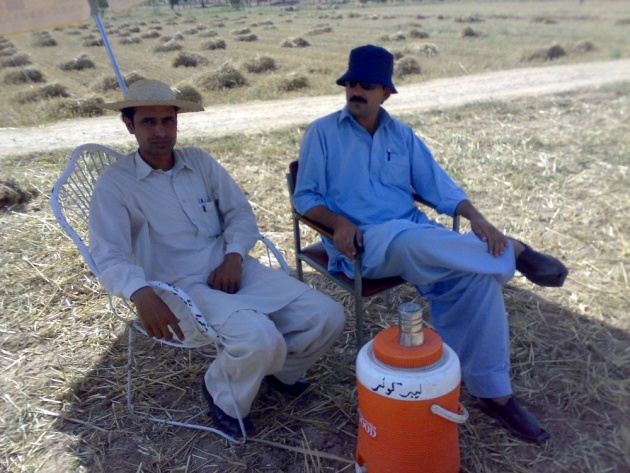A field experiment was conducted at Barani Agricultural Research Station Kohat during 2009-10. Three sowing dates (October 15, November 15 and December 15) were tried on four cereal Crops (Wheat, Trictical, barlay and Oat). Experiment was quadruplicated in split plot design with a main plot size of 5 x 5.4 meter and with sub plot size of 5 × 1.8 m with six rows 30 cm apart. Sowing dates and Crops were randomized in main and sub plots with 4 replications, respectively. Crop was fertilized @ 120:60:30 kg NPK per hectare. All agronomic practices were kept normal and uniform. Data on days to 50% flowering, days to maturity, plant height, grain yield were recorded and analyzed.
1: Days to 50% flowering:
Table 1 show that the crop significantly affected days to 50%flowering. Maximum days (121) to 50%flowering were noted for oat followed by barley (113). The Minimum days (101) to 50%flowering were recorded for triticale (101) followed by wheat (103 days). Maximum days to 50%flowering was recorded for D2 (117 days) followed by D1 (115 days). Interaction also significantly affected days to 50%flowering (Table 1). Maximum days were recorded for oat on D2 (134) followed by 123 days in barley on D1 and 108 days for wheat and triticale on D2 respectively. Minimum Days to 50% flowering were recorded on D3 for triticale (91) followed by 96 days for barley and 97 days for wheat on D3 respectively. The seedling in December 15 sowing was significantly lower (160/m2) than November 15 and Sowing dates effect on wheat yield (Qasim et al. 2008).
2: Plant height
The data (Table 2) that the crop significantly affected plant height (cm). Maximum height (134 cm) was noted for oat followed by triticale (124 cm). The Minimum height (89 cm) was recorded for barley followed by wheat (105 cm) indicates that sowing dates significantly affected plant height. Effect of sowing dates was non-significant. However, maximum plant height was recorded on D2 (116 cm) followed by D3 (110 com). Interaction significantly affected plant height. Oat sown on D2 (November 15) produced significantly tallest plants (146 cm) followed by 124 cm in Triticale on D1 and D2 and 107 cm in Wheat on D1 and D3 respectively, against Barley sown on D3 (December 15) 83 cm followed by 100 cm in Wheat on D2. Hussain (1986) under particular agro-ecological conditions of Northern Areas of Pakistan reported similar observations. The earlier sown crop had longer vegetative growth period than late sown crop which resulted in more plant height.




